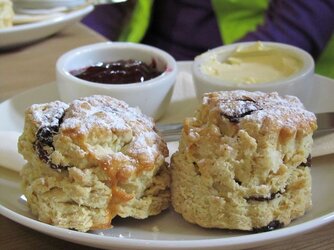Technically, whether with a hoof or a cloven hoof all the toes are still there internally.
But yes, Unicorns effecively have two toes in their cloven hooves, big toes and littler toes.

I'm afraid I have to pull rank here, and wave my MSc.

There is only one toe inside a horse's hoof, and two in the hooves of cattle etc. Horses have only the middle toe, cattle and sheep etc have the third and fourth toes. Horses have one metapodial (metacarpal, or metatarsal, the bone above the toe), cattle and sheep etc also only have one, but it's the third and fourth ones fused together, with a very cool double articulation point for the toes. The loss of digits is an evolutionary trait in prey animals to reduce the relative weight of the foot. In conjunction with the elongation of the foot, to give a longer stride, this allows fast running.
There are some vestigial remains of some of the other metapodials in some hooved animals. The vestigial metapodials of pigs are very usefully pointy and pin shaped, and were often used as... pins.
Unicorns would fit the cattle/sheep model, of a single metapodial, and twin sets of phalanges. Sadly, in all my experience of animal skeletons, I was never able to positively identify a unicorn.
The osteology of the horn is more open to discussion. If it is a true horn, there will be a bony core, around which the horn sheath, made of the same stuff as fingernail, will grow. However, there are theories that the legend is based around the tusk of a narwhal, which is a tooth and therefore would be dentine and enamel (and would be much stronger and better preserved)
The anatomy of mythical beasts is fun. For example, the shoulder area of a dragon would be dead complicated, with forelimbs AND wings attached to the scapulae.
It's a long time since I rummaged through a box of assorted bones. I wonder how many I could identify off hand now.
And on that note, I really ought to go to bed! Night all!







